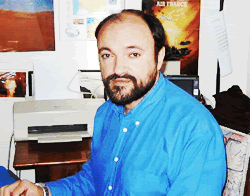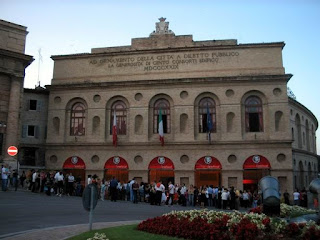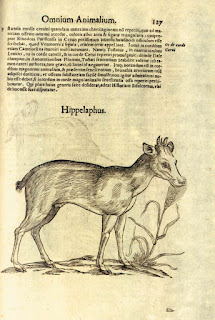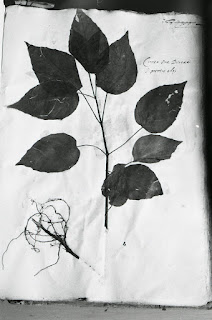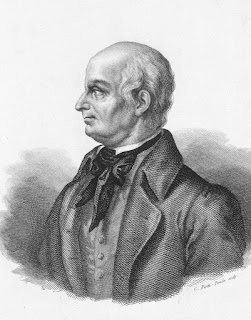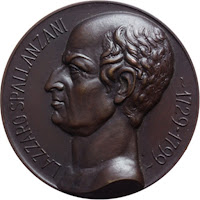Scientist was first to map the human lymphatic system
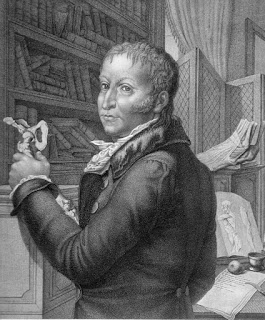 |
| Paolo Mascagni studied geology before turning to human science and anatomy |
The physician Paolo Mascagni, whose scientific research enabled
him to create the first map of the complete human lymphatic system, was born on
this day in 1755 in Pomarance, a small town in Tuscany about 40km (25 miles)
inland from the western coastline.
Mascagni described his findings in a book with detailed illustrations
of every part of the lymphatic system he had identified, which was to prove
invaluable to physicians wanting to learn more about a part of the human body
vital to the regulation of good health.
He also commissioned the sculptor Clemente Susini to create
a full-scale model in wax of the lymphatic system, which can still be seen at
the Museum of Human Anatomy at the University of Bologna.
Later he created another significant tome, his Anatomia Universa,
which comprises 44 enormous copperplate illustrations that set out to bring
together in one book the full extent of human knowledge about the anatomy of
the human body. The ‘book’ in the event was
so large it was never bound, each plate measuring more than 3ft 6ins (1.07m) by
2ft 6ins (0.76m), designed in such a way that those from the same plane of
dissection can be placed together and show the whole body in life size.
Mascagni was the son of Aurelio Mascagni and Elisabetta
Burroni, both belonging to ancient noble families from Chiusdino, a village in
the province of Siena.
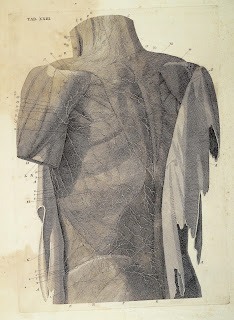 |
| An illustration from Mascagni's celebrated book on the human lymphatic system |
He studied at the University of Siena, where his teacher of
anatomy was Pietro Tabarrini, and graduated in philosophy and medicine in 1771.
By his final year, he had been appointed assistant to Tabarrini and succeeded
his mentor as Professor of Anatomy after blindness forced him to retire.
As a young man, Mascagni had been keen on geology and wrote
a number of papers on the thermal springs of Siena and Volterra. Later, he would
successfully identify boric acid in the waters and suggest ways to produce from
it the industrial compound now known as borax.
After graduating, his focus turned to the human lymphatic
system, feeling that he owed it to Tabarrini to do what he could to advance his
teacher’s research into the workings of the human body. He decided that he would
not work in clinical medicine but devote himself entirely to teaching and research.
His work was interrupted for a while by the political
upheaval of the late 18th century, when Tuscany was occupied by the
French. He became involved in politics somewhat reluctantly, becoming Superintendent
of the Arts, Sciences and Charitable Institutions of Siena, and this placed him
in constant conflict with the French authorities over their seizing of personal
and public property.
Unfortunately, his involvement with the French was
misinterpreted when Austria regained control of the area. Accused of having
Jacobin sympathies, he was arrested and imprisoned for seven months.
 |
| The statue of Mascagni in the courtyard of the Uffizi in Florence, where he lived for some years |
On his release, he was appointed a professor of anatomy at
the University of Pisa and began lecturing at the Hospital of Santa Maria Nuova
in Florence before becoming a full professor at the University of Florence.
In his research into the lymphatic system, Mascagni
perfected a technique whereby he injected mercury as a contrast medium into the
peripheral lymphatic networks of a human cadaver and by following the mercury’s
flow to other parts of the system was able to produce detailed diagrams and
models.
This brought him fame all over Europe, yet he did not limit
himself to merely describing the anatomy of the lymphatic system. By his research into its physiology and pathology
he was able to highlight its importance in fighting disease in the human body, the
understanding of which helped in the evolution of new treatments.
Mascagni died in 1815 during a stay at his estate in
Castelletto, near Chiusdino, the village near Siena where his family originated
and where he spent most of his free time. He had contracted a pernicious fever,
probably malaria.
His memory has been commemorated in several ways. The street
where he was born in Pomerance is now called Via Paolo Mascagni; the hamlet
where the family lived, 33km (20 miles) southwest of Siena, is now known as
Castelletto Mascagni, and there is another Via Paolo Mascagni in nearby
Chiusdino.
A statue of Paolo Mascagni can be found in a niche in the
courtyard of the Uffizi in Florence, as one of the great men of Tuscany. His house in Florence was in Via Fiesolana. There is also a monument to him in the
Accademia dei Fisiocritici in Siena, of which he was president.
 |
| One of the medieval gates into the town of Pomarance |
Travel tip:
The town of Pomarance, where Mascagni was born, sits on a
hill overlooking Val di Cecina, on the border between the provinces of Pisa,
80km (50 miles) to the north, and Siena, 69km (43 miles) to the east. The main
square, Piazza de Larderel, is named after Francois Jacques de Lardarel, a 19th
century French engineer who worked in the area on the exploitation of
geothermal energy from the steam emitted by lagoons in the area.
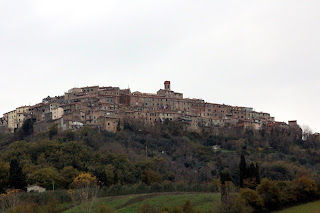 |
| The ancient village of Chiusdino occupies a hilltop position |
Travel tip:
The ancient village of Chiusdino dates back to the seventh or
eighth century, when it was a Longobard settlement, sitting on the top of a
hill, surrounded by walls. Much of the history of the town surrounds the legend
of San Galgano, who was an arrogant, licentious son of a local feudal lord in
the 12th century who changed his ways after a supposed visit from Saint
Michael the Archangel, who told him he must give up his excesses, prompting Galgano
to say it would be easier to cut a rock with a sword. As if to prove it, he launched
a sword thrust at a rock and was amazed when the blade plunged into the rock as
easily as a knife into butter. He knelt to pray and vowed to become a hermit.
The sword in the rock remains on display in a chapel, the Rotonda della Spada,
that was built around it.






